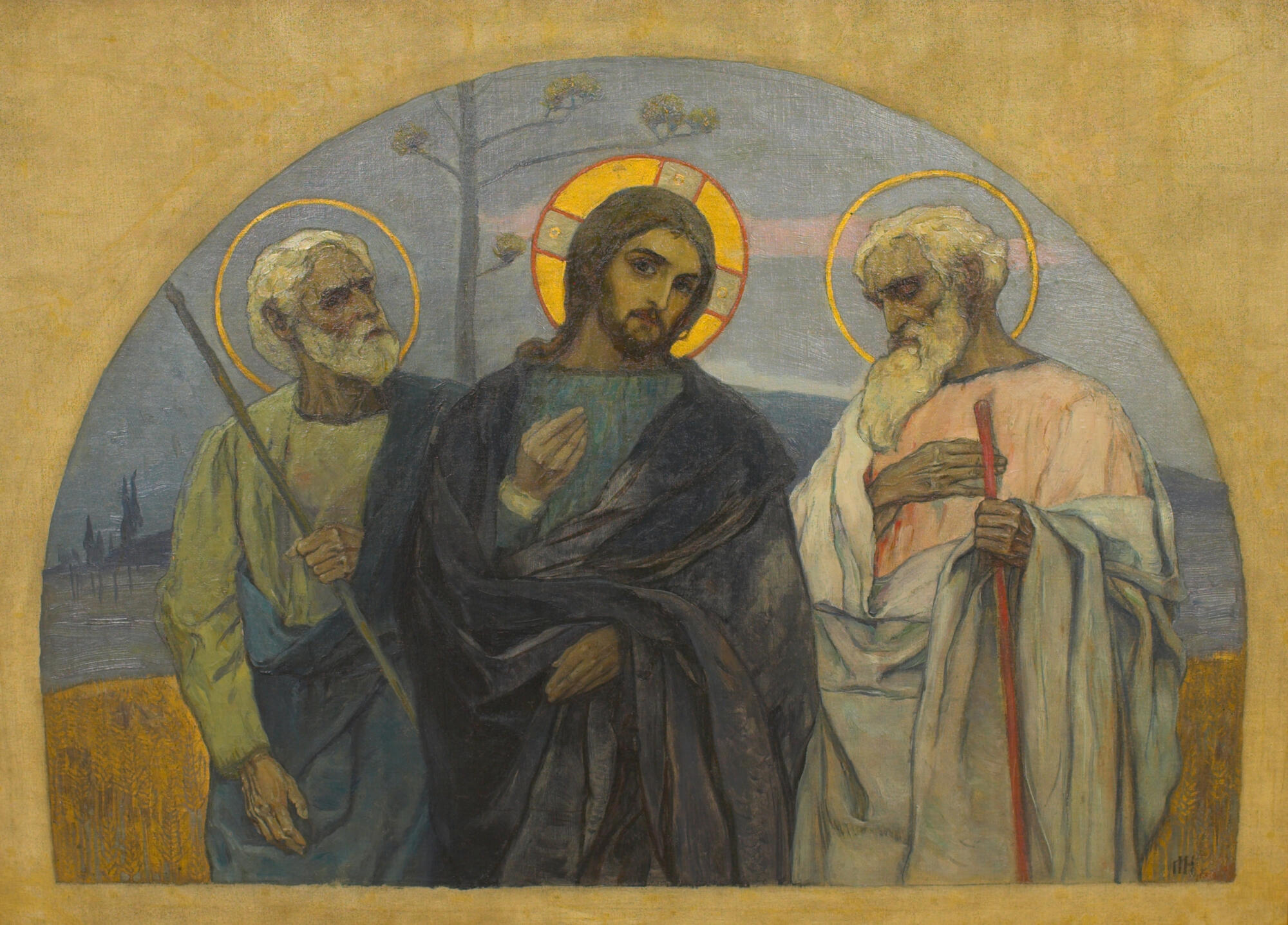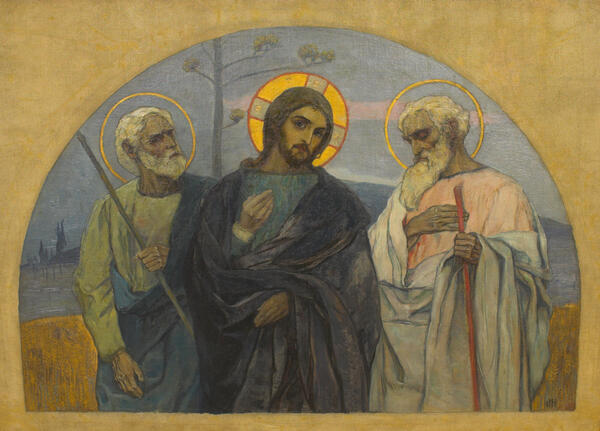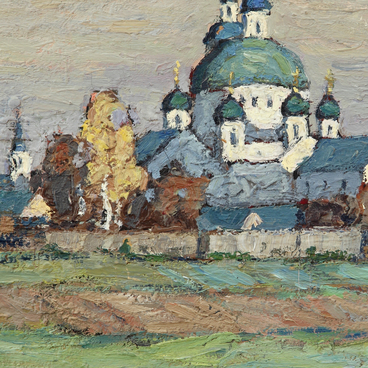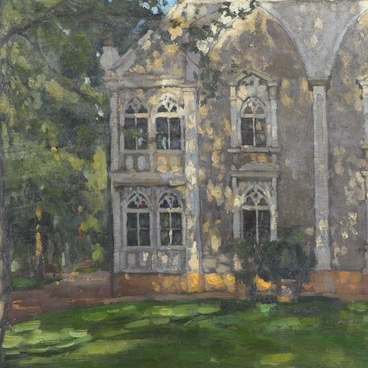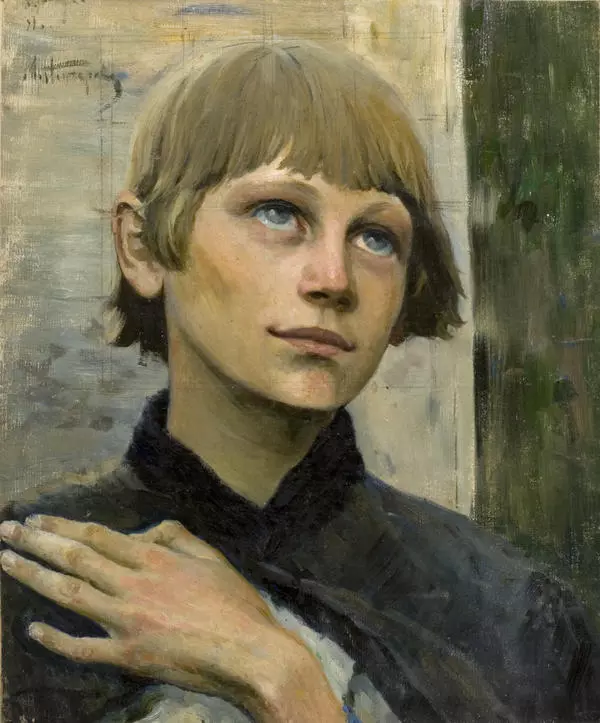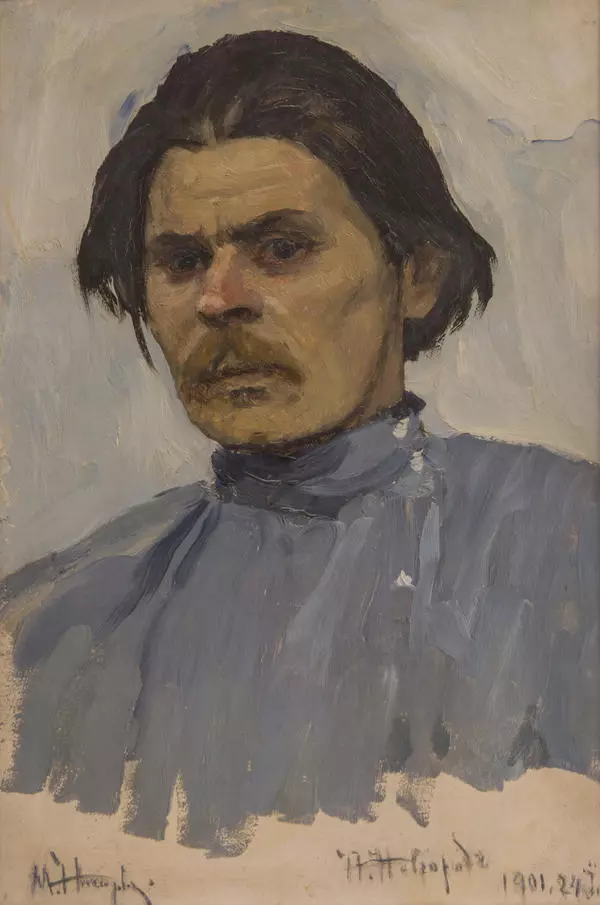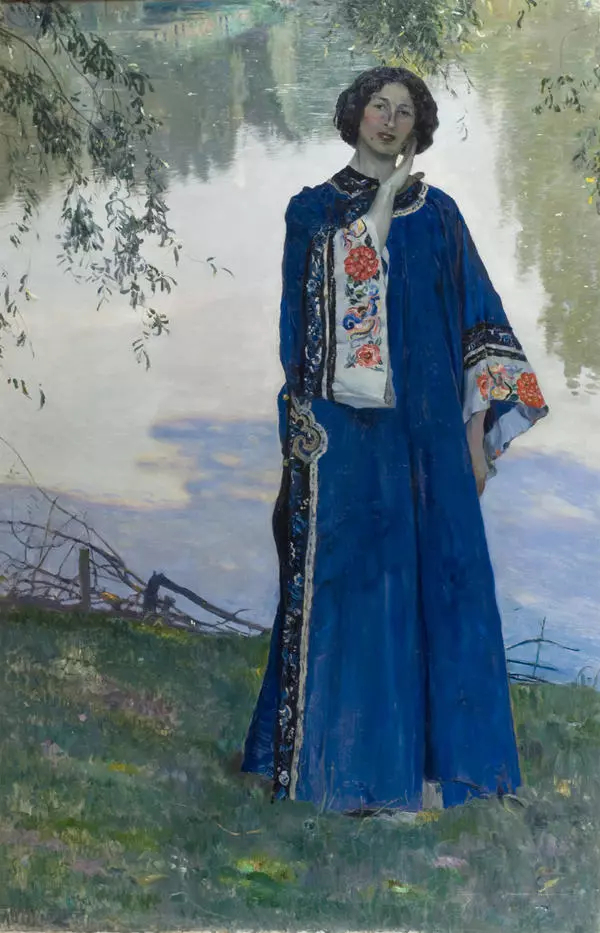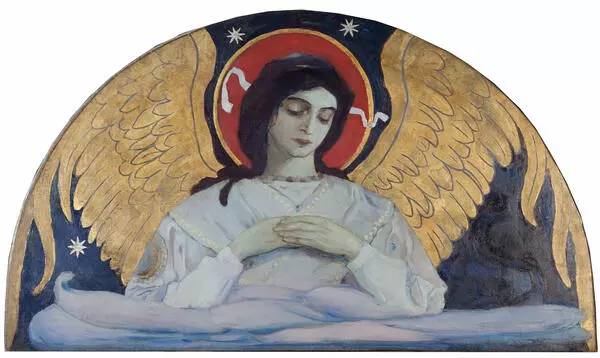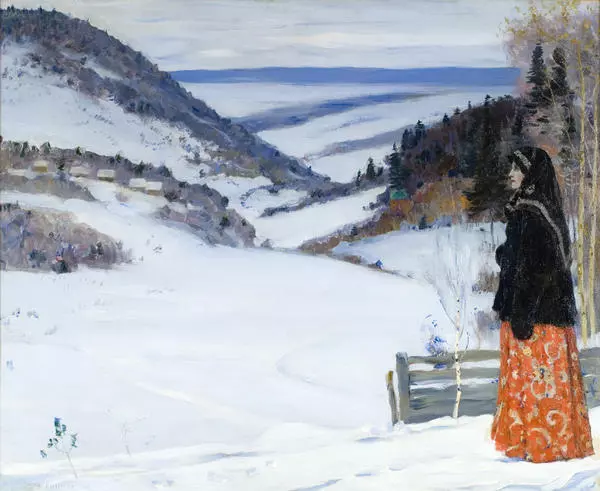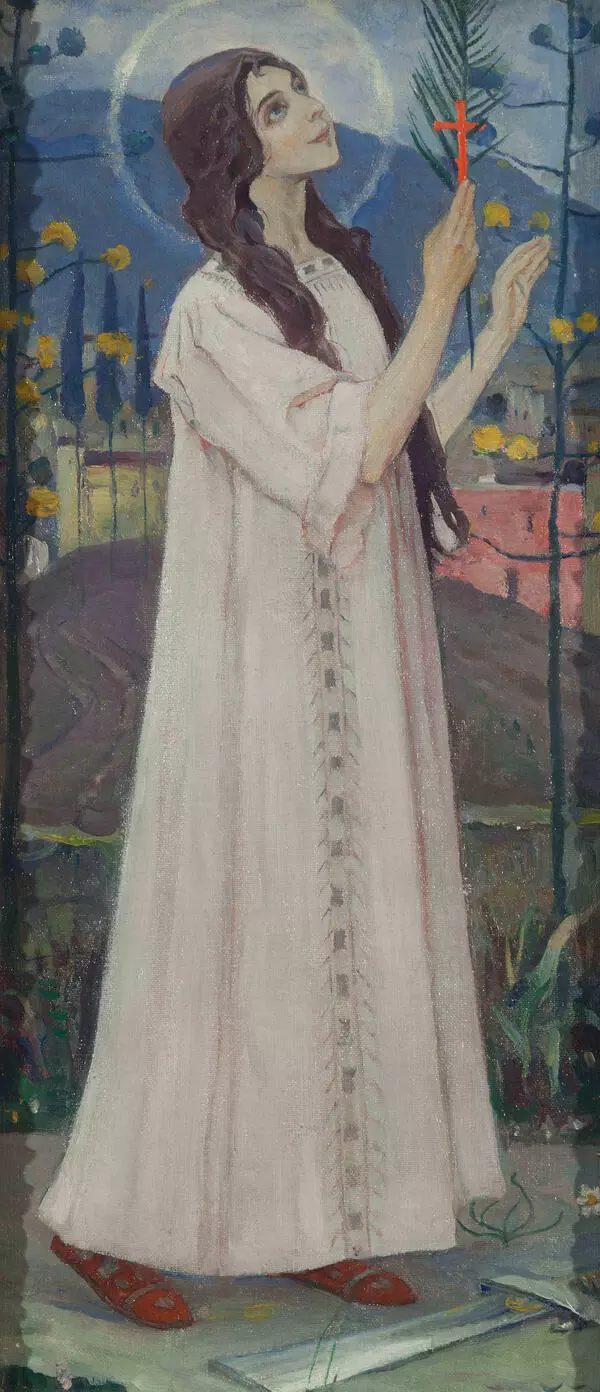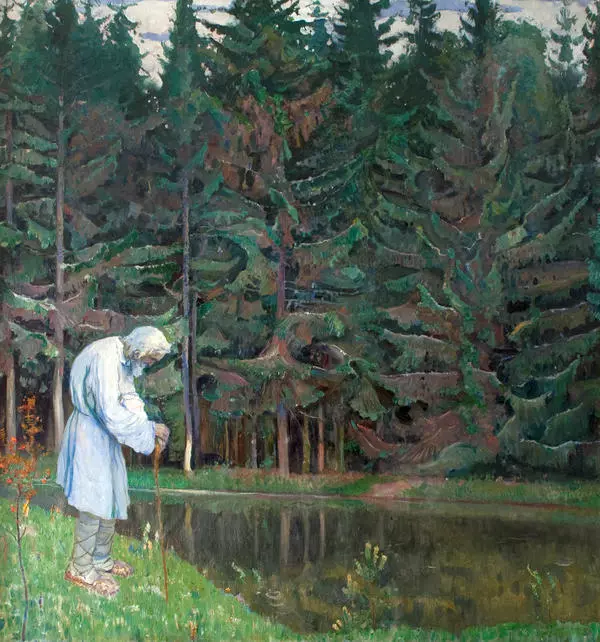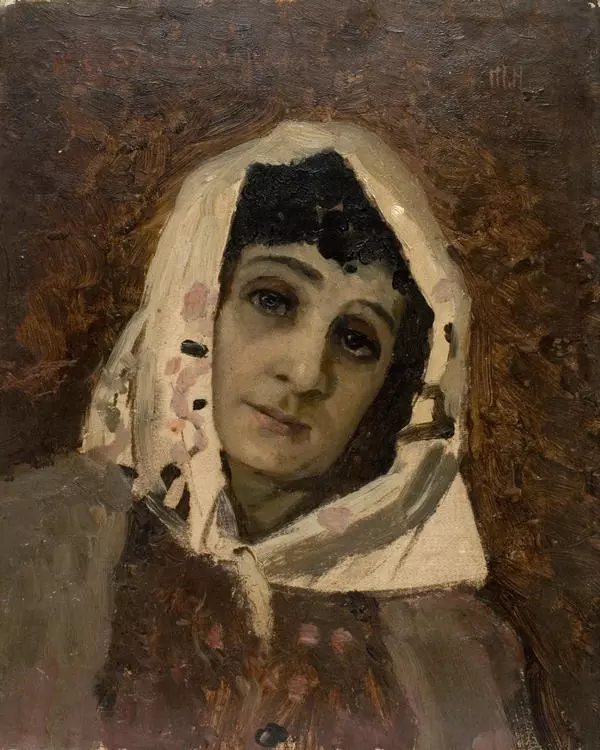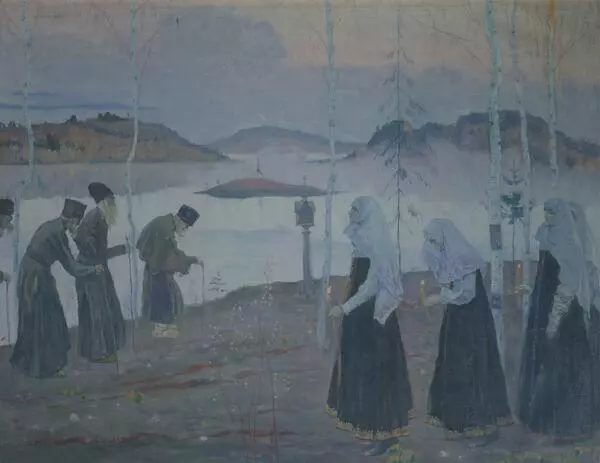Mikhail Nesterov was born in Ufa, in a religious and patriarchal family of a merchant. He graduated from the Moscow school of painting, sculpture and architecture, where his teachers were Vasily Perov and Alexey Savrasov. Influenced by their approach, Nesterov created his early paintings following the tradition of the 19th century Russian realist school (so-called ‘peredvizhniki’).
As his painting style became more mature, the artist began to work on a religious theme. Nesterov had a lot of artworks in the field of mural painting for interior design of churches. In 1890, he met Professor Adrian Viktorovich Prakhov, who invited the artist to do the wall paintings for St. Vladimir’s Cathedral in Kiev. To learn the techniques of mural painting, Nesterov went to Rome, Palermo, Constantinople and Ravenna — there he could get acquainted with the traditions of Byzantine art.
Wall paintings for interior decoration of churches made Nesterov a famous muralist. He worked on the wall paintings in the palace church of Alexander Nevsky in Abastuman in Georgia, the Church of the Intercession of the Virgin Mary in Moscow, the Transfiguration Cathedral in Sumy.
The artist created a sketch of the mosaic “On the way to Emmaus” for the carved iconostasis of the Church of the Savior on the Blood — one of the main places of interest in this Cathedral. The sketch is made in compliance with the spirit of art nouveau style, which is manifested in somber, soft colors, simple, harmonious and clear composition. This story is described in the last Chapter of the Gospel of Luke: two Christ’s pupils after his crucifixion on Calvary were going from Jerusalem to Emmaus, on their way the resurrected Christ joined them, but they did not recognize Him.
In the center of the composition there are three characters against the background of the Nesterov’s favorite landscape — a thin tree and a pearl-pink sunset. Christ is depicted with a shining halo, the pupils’ halos are just a thin golden outline. Jesus is facing the audience with a blessing gesture, and the two white-haired elders are facing Jesus Christ, but they are not looking at him. The character on the left seems to be listening to the words of the Savior, still having doubts about his feelings. The elder on the right bows his head in front of him, his right hand is raised to his chest — this gesture is interpreted in iconography as acceptance and humility. Mikhail Nesterov wanted to show a special moment — when the Christ’s pupils begin to recognize their teacher.
As his painting style became more mature, the artist began to work on a religious theme. Nesterov had a lot of artworks in the field of mural painting for interior design of churches. In 1890, he met Professor Adrian Viktorovich Prakhov, who invited the artist to do the wall paintings for St. Vladimir’s Cathedral in Kiev. To learn the techniques of mural painting, Nesterov went to Rome, Palermo, Constantinople and Ravenna — there he could get acquainted with the traditions of Byzantine art.
Wall paintings for interior decoration of churches made Nesterov a famous muralist. He worked on the wall paintings in the palace church of Alexander Nevsky in Abastuman in Georgia, the Church of the Intercession of the Virgin Mary in Moscow, the Transfiguration Cathedral in Sumy.
The artist created a sketch of the mosaic “On the way to Emmaus” for the carved iconostasis of the Church of the Savior on the Blood — one of the main places of interest in this Cathedral. The sketch is made in compliance with the spirit of art nouveau style, which is manifested in somber, soft colors, simple, harmonious and clear composition. This story is described in the last Chapter of the Gospel of Luke: two Christ’s pupils after his crucifixion on Calvary were going from Jerusalem to Emmaus, on their way the resurrected Christ joined them, but they did not recognize Him.
In the center of the composition there are three characters against the background of the Nesterov’s favorite landscape — a thin tree and a pearl-pink sunset. Christ is depicted with a shining halo, the pupils’ halos are just a thin golden outline. Jesus is facing the audience with a blessing gesture, and the two white-haired elders are facing Jesus Christ, but they are not looking at him. The character on the left seems to be listening to the words of the Savior, still having doubts about his feelings. The elder on the right bows his head in front of him, his right hand is raised to his chest — this gesture is interpreted in iconography as acceptance and humility. Mikhail Nesterov wanted to show a special moment — when the Christ’s pupils begin to recognize their teacher.
